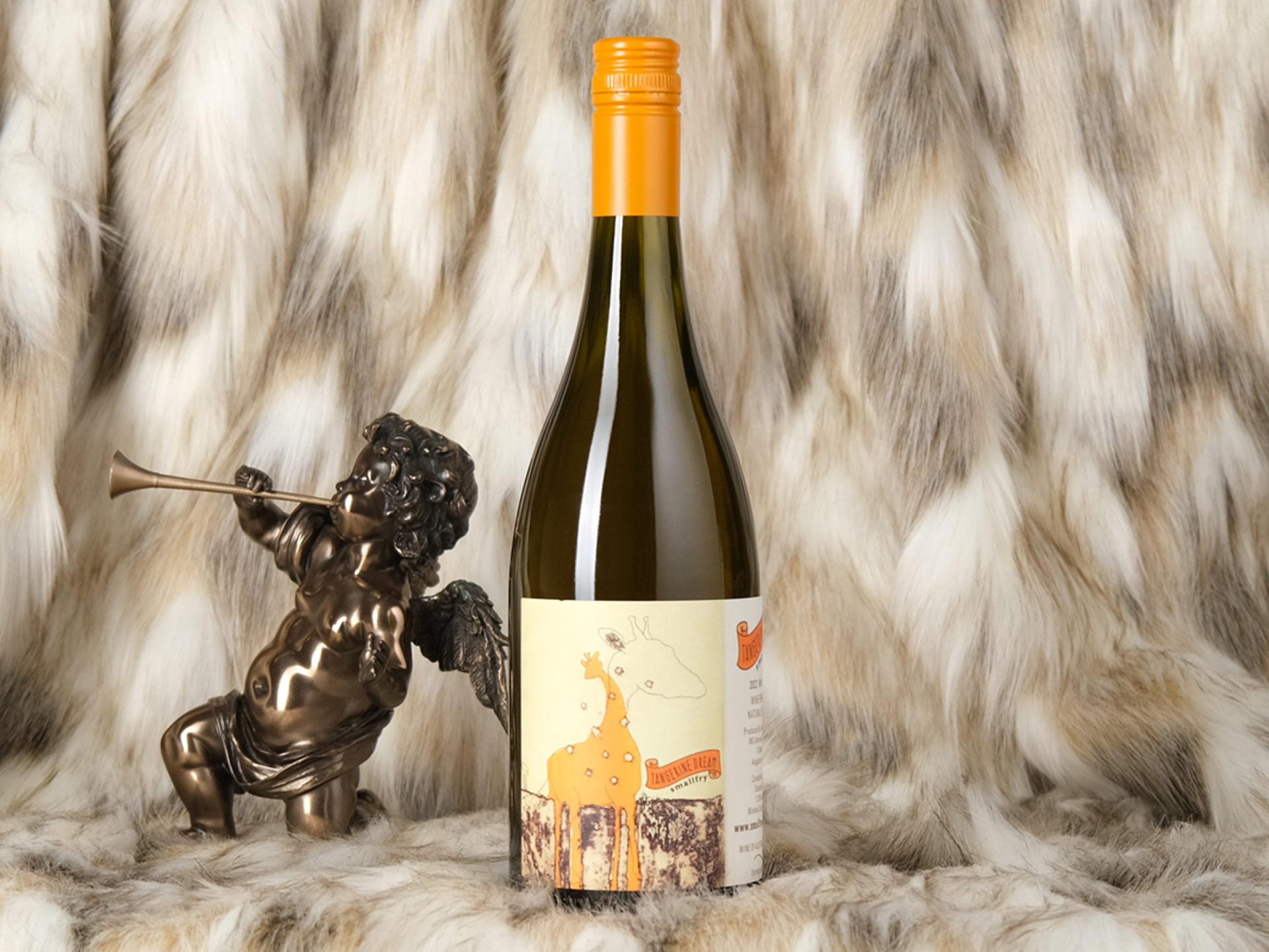This is our favourite vintage for Smallfry’s orange wine, with a perfect balance between savoury tension, in both flavour and feel, with citrus peel and subdued blossom flecked with warm spices and earthy notes, a prudent amount of grip adding structure.
Tasting note
A blend mainly made up of semillon and pedro ximénez, with riesling, roussanne and muscat in support, this has seen a good dose of skin contact, which is evident from the deep orangey gold colour. It’s firmly in orange/amber wine territory but it doesn’t trade in all the brightness for savouriness. Candied citrus peel, Meyer lemon, carraway and a savoury take on bitter orange marmalade all feature on the nose, with a dusting of clove and ground ginger and a sandy, earthy note. There’s grip, of course, a plum skin chew, with some fleshy pockets of fruit richness providing ballast, a hint of fennel seed closing out.
Themes of this wine
Skin Contact
The skins hold the colouring matter and lots of tannin. Leave them in contact with the juice/wine and you’ll extract those elements. Most conventional white wine sees no skin contact, rosé a little bit to get a blush, and red wine plenty to get the colour and structure. Skin-contact whites… well, they have some skin contact. Yep. More colour, more tannin and a different flavour profile.
Semillon
In league with sauvignon blanc and muscadelle, semillon is responsible for the dry whites of Bordeaux, as well as the great sweet wines of Sauternes, Barsac et al. In Australia, semillon found its own unique niche in the Hunter Valley, making low alcohol, super-bright and zippy wines that age for decades, while in Margaret River it is more often than not blended with sauvignon blanc to make the region’s signature aromatic white.
Pedro Ximénez
Pedro ximénez is a Spanish grape that is best known for a varietally labelled Sherry that is dark in colour and lusciously rich and sweet, with strong flavours of dried fig and date. The variety prospered in this country when fortified wines were the dominant species, and suffered equally after their massive decline. Today, the variety still goes to making some Sherry (called Apera here now) styles as well as dessert wines, but most has been removed from vineyards. However, there are makers now using the grape to investigate new styles based on heritage plantings, and some brave souls are even planting it.
Riesling
Riesling is one of the world’s most versatile grapes, capable of making styles from aridly dry to lusciously sweet, plus everything in between, and with a transparency that reflects where it was grown like few – if any – other grapes. Hailing from Germany, it’s equally embedded in France and Austria, while the style made famous in the Clare Valley that once defined Australian versions has now been joined by a multitude of expressions, and from right across the country.
Roussanne
Hailing from France’s Northern Rhône, roussanne is slowly making a mark in Australia, with the grape well suited to warmer climates, producing wines of texture, fruit depth and freshness, while also making compelling expressions in cool climate zones. With aromas of orchard fruits, in the pear and golden apple spectrum, roussanne also typically displays herbal aromas, though not in the grassy spectrum, more akin to alpine herbs and sage.
Muscat
An ancient group of grapes, the muscat family, which has something like 200 documented variations, all have a linking characteristic of being headily aromatic, with floral, grapey and musky notes. The opulence of the grapes makes them ideal for sweet and fortified wines, which they are predominantly used for.
Barossa
The Barossa is arguably Australia’s most revered wine region. It dwarfs many other fine wine regions for scale, while firmly maintaining a quality profile, with its distinctive style and character recognised worldwide. It is dripping in history, has far and away the largest resource of old and ancient vines in the country, and fifth- and sixth-generation growers and makers proliferate. It is fair to call it the cornerstone of Australian wine. It is the home of powerful red wines, established names making established styles, but there are also makers finding new meaning in the territory.
Biodynamic
An organic farming method created by Rudolph Steiner in the 1920s, biodynamics is a slightly mystical approach, employing elaborate organic ‘preparations’ to restore the natural balance of the soil and encourage microorganisms. It also observes the lunar cycle to prescribe actions in the vineyard and winery. Why some of it works is not clearly understood, but it is used by some of the world’s greatest producers.



